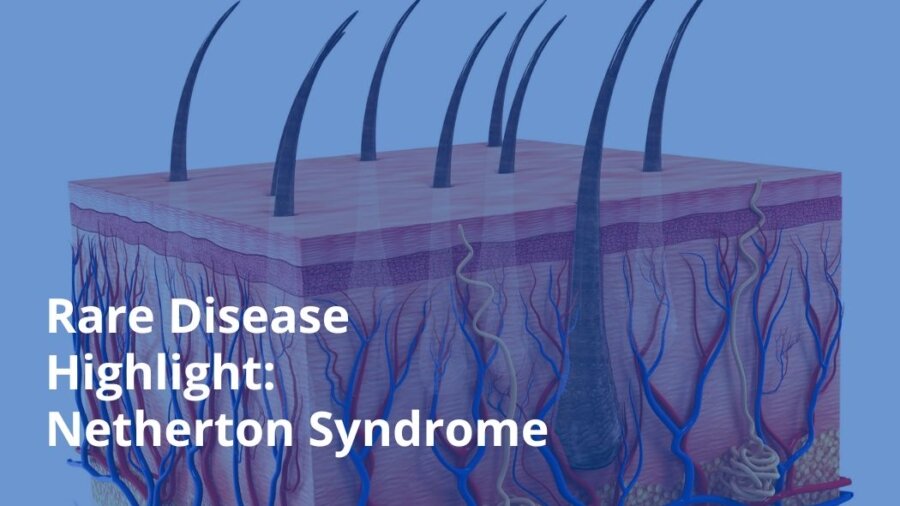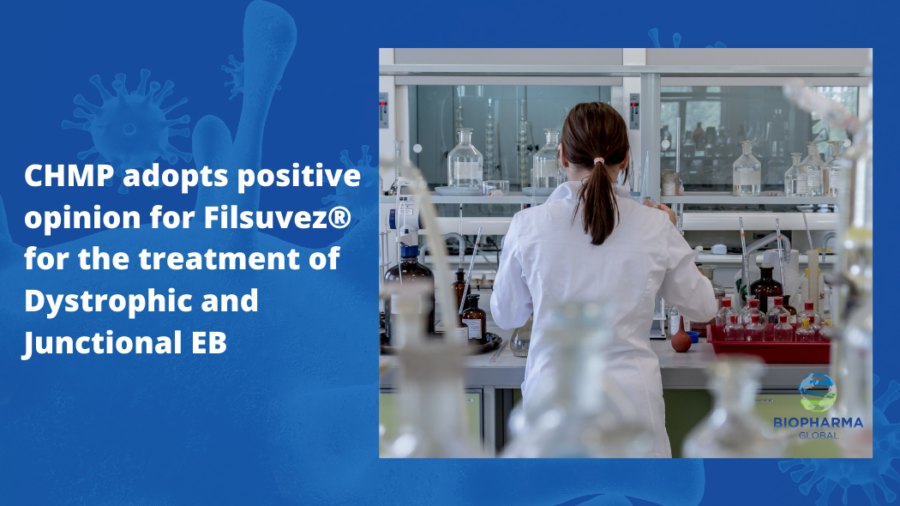Netherton syndrome (NS), also referred to as bamboo hair syndrome, is a rare and severe genetic skin disorder [1-3]. The disease is characterized by chronic ichthyosiform erythroderma (a condition of fine white and red scales across the entire body), atopy (a genetic tendency to develop allergic diseases), and trichorrhexis invaginate (a distinctive hair disorder known as bamboo hair) [1, 2, 4, 5].
NS is a hereditary disorder that arises from a loss-of-function mutation to the serine protease inhibitor Kazal-type 5(SPINK5) gene, which leads to the clinical features of the disease. This type of mutation results in a deficiency of the lympho-epithelial kazal type inhibitor (LEKTI) and increase of specific enzymes known as proteases, such as kallikrein 7 (Klk7) and enzyme elastase 2 (ELA2), and structural components of the outer layer of the skin, such as pro-filgarrin [6]. These molecules are involved in the balance of fatty acids in the skin, natural peeling of the outer layer skin, activation of the inflammatory process, and structure of the skin [7-11]. Thus, the consequential dysregulation results in the breakdown of the skin barrier [2, 6, 12]. NS is transmitted from parents to their children in an autosomal recessive manner. Autosomal refers to genes located on non-sex chromosomes, such as SPINK5. Each chromosome has two working copies of a gene, inherited from each parent. In recessive genetic diseases, both mutated copies of the gene are needed to induce the disease. Therefore, children must receive a faulty gene from each of their parents for NS to become apparent.
Currently, there are about 150 cases of NS reported in the literature, but the true population size is expected to be higher due to difficulties in diagnosis and overlapping of symptoms with other conditions. Since NS is a hereditary disorder generally observed at birth, newborns and infants are the most vulnerable [13]. This patient population fails to thrive in the first year of life. Specifically, newborns with NS manifesting generalized and severe inflammation of the entire skin surface, referred to as congenital ichthyosiform erythroderma (CIE), experience 10-40% mortality in the first year of life. The increased mortality is due to skin barrier disturbances enhancing the risk of infections and hypernatremic dehydration, a form a dehydration where there is too much sodium in the blood [14-16]. Young NS patients also suffer from growth retardation and short stature due to recurrent infections and inflammation [4]. As the patient grows older, the skin disease gradually regresses into a milder form, referred to as ichthyosis linearis circumflexa (ILC). ILC is characterized by recurrent red plaques on the skin with a double scaling edge. Other allergic symptoms caused by NS include asthma, sneezing, congestion, and itchy nose, eczema (a skin condition characterized by dry, itchy, and inflamed skin), and frequent sensitizations to airborne or food allergens [4, 17].
Currently, no satisfactory treatments are approved for NS. Varying success is observed when patients are treated with topical corticosteroids, topical calcineurin inhibitors, topical retinoids, narrowband ultraviolet B phototherapy, ultraviolet radiation, and oral acitretin. For patients with severe disease, intravenous immunoglobulin and anti-tumor necrosis factor-alpha (TNF-α) antibodies may be used [12]. Overall, based on the clinical severity and limited treatments available to effectively treat manifestations of NS, novel therapies for this patient population are needed to address the unmet medical need.
References
1. OMIM. Netherton Syndrome; NETH. 2012 [cited 2012; Available from: https://www.omim.org/entry/256500.
2. Leclerc-Mercier, S., et al., Skin Biopsy in Netherton Syndrome: A Histological Review of a Large Series and New Findings. Am J Dermatopathol, 2016. 38(2): p. 83-91.
3. NIH. Netherton Syndrome. 2019 08/08/2019]; Available from: https://ghr.nlm.nih.gov/condition/netherton-syndrome#statistics.
4. Hovnanian, A., Netherton syndrome: new advances in the clinic, disease mechanism and treatment AU – Hovnanian, Alain. Expert Review of Dermatology, 2012. 7(1): p. 81-92.
5. OMIM. Netherton Syndrome. 2019 08/08/2019]; Available from: https://omim.org/entry/256500.
6. Bonnart, C., et al., Elastase 2 is expressed in human and mouse epidermis and impairs skin barrier function in Netherton syndrome through filaggrin and lipid misprocessing. J Clin Invest, 2010. 120(3): p. 871-82.
7. Elias, P.M., Y. Hatano, and M.L. Williams, Basis for the barrier abnormality in atopic dermatitis: outside-inside-outside pathogenic mechanisms. J Allergy Clin Immunol, 2008. 121(6): p. 1337-43.
8. Caubet, C., et al., Degradation of corneodesmosome proteins by two serine proteases of the kallikrein family, SCTE/KLK5/hK5 and SCCE/KLK7/hK7. J Invest Dermatol, 2004. 122(5): p. 1235-44.
9. Hachem, J.P., et al., Sustained serine proteases activity by prolonged increase in pH leads to degradation of lipid processing enzymes and profound alterations of barrier function and stratum corneum integrity. J Invest Dermatol, 2005. 125(3): p. 510-20.
10. Nylander-Lundqvist, E., O. Back, and T. Egelrud, IL-1 beta activation in human epidermis. J Immunol, 1996. 157(4): p. 1699-704.
11. Brattsand, M. and T. Egelrud, Purification and characterization of interleukin 1 beta from human plantar stratum corneum. Evidence of interleukin 1 beta processing in vivo not involving interleukin 1 beta convertase. Cytokine, 1998. 10(7): p. 506-13.
12. Saleem, H.M.K., et al., Netherton Syndrome: A Case Report and Review of Literature. Cureus, 2018. 10(7): p. e3070-e3070.
13. NORD. Ichthyosis, Netherton Syndrome. 2005 08/08/2022]; Available from: https://rarediseases.org/rare-diseases/ichthyosis-netherton-syndrome/#:~:text=Netherton%20syndrome%20is%20a%20rare,as%20an%20autosomal%20recessive%20trait.
14. Stoll, C., et al., Severe hypernatremic dehydration in an infant with Netherton syndrome. Genet Couns, 2001. 12(3): p. 237-43.
15. Di, W.L., et al., Ex-vivo gene therapy restores LEKTI activity and corrects the architecture of Netherton syndrome-derived skin grafts. Mol Ther, 2011. 19(2): p. 408-16.
16. Hoeger, P.H. and J.I. Harper, Neonatal erythroderma: differential diagnosis and management of the “red baby”. Archives of Disease in Childhood, 1998. 79(2): p. 186.
17. Sun, J.D. and K.G. Linden, Netherton syndrome: a case report and review of the literature. Int J Dermatol, 2006. 45(6): p. 693-7.
BioPharma Global is a mission-driven corporation dedicated to using our FDA and EMA regulatory expertise and knowledge of various therapeutic areas to help drug developers advance treatments for the disease communities with a unmet medical needs. If you are a drug developer seeking regulatory support for Orphan Drug designation, Fast Track designation, Breakthrough Therapy designation, other FDA/EMA expedited programs, type A, B (pre-IND, EOPs), or C meeting assistance, or IND filings, the BioPharma Global team can help. Contact us today to arrange a 30-minute introductory call.


